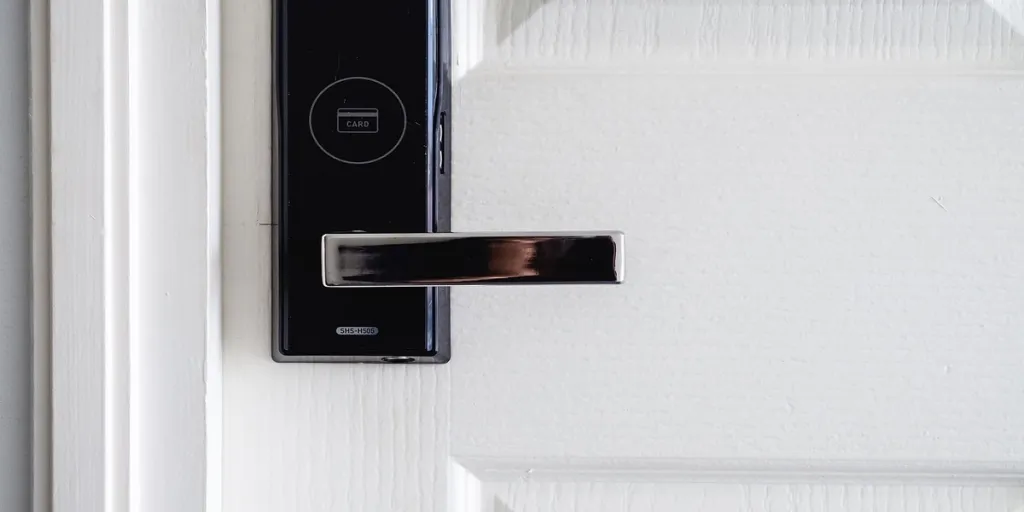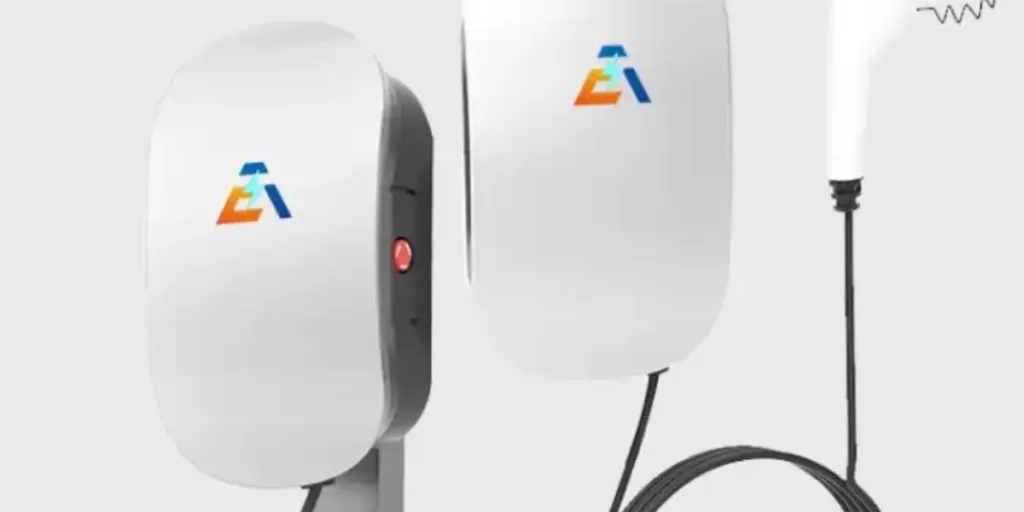In an era where home is not just where the heart is but also the epicenter of our lives, safeguarding it has never been more critical. Welcome to the future of home security, where cutting-edge technology meets peace of mind at your doorstep. The landscape of video doorbells has evolved significantly, offering a new realm of possibilities for protecting the home. Once primarily associated with home security, these devices have become smart, indispensable tools that promise enhanced safety, communication, and convenience for customers.
A video doorbell is a smart home device that combines a traditional doorbell with a video camera, enabling homeowners to see, hear, and communicate with visitors at their front door using a mobile app or other connected devices like smart speakers. These devices typically consist of a camera, a microphone, a speaker, and motion sensors.
In this blog, we embark on a journey through the best video doorbells that the year 2023 has to offer.
Table of Contents
Home security market
Importance of home security
Uses for video doorbells besides security
The evolution of video doorbells
Key factors when choosing a video doorbell
The best video doorbells in 2023
Conclusion
Home security market
The global home security market was valued at USD 51.9 billion in 2021 and is projected to grow to USD 106.3 billion by 2030 with a compound annual growth rate (CAGR) of 8.6% between 2022 and 2030. More specifically, the global video doorbell market size was valued at USD 1.2 billion in 2021 and is projected to reach USD 4.6 billion by 2031, growing at a CAGR of 14.3% between 2022 and 2031.
Importance of home security

Home security holds paramount importance in the contemporary world for several compelling reasons. It safeguards the well-being and safety of cherished family members and loved ones, fostering an invaluable sense of sanctuary within one’s home. Moreover, it’s a deterrent against potential threats, as visible security measures, including alarms, cameras, and well-illuminated areas dissuade would-be burglars and intruders from even considering your property a target.
Beyond deterrence, a robust home security system plays a pivotal role in the prevention of crimes such as break-ins, theft, and vandalism, sparing individuals from potential financial and emotional turmoil. In the unfortunate event of a security breach, surveillance systems, including advanced technologies like video doorbells, furnish indispensable evidence to law enforcement and insurance companies, aiding investigations and claims.
Furthermore, these systems serve as an emergency response mechanism, promptly alerting homeowners and authorities to critical situations such as fires, carbon monoxide leaks, or medical incidents, potentially saving lives.
Role of video doorbells in enhancing home security
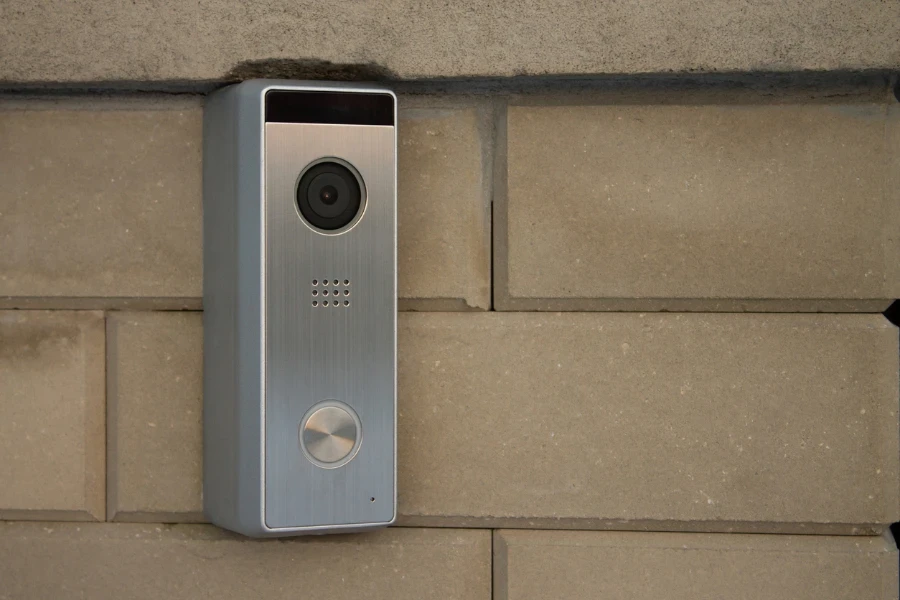
Video doorbells are increasingly becoming an essential component of home security for several reasons:
- Visual verification: Video doorbells provide a live or recorded video feed of who is at your door, allowing visual confirmation of the identity of visitors or delivery personnel before opening the door.
- Deterrence: The mere presence of a video doorbell can deter potential burglars or porch pirates, as they know they’re being recorded and identified.
- Documentation: Video doorbells record interactions at your doorstep, providing evidence in case of disputes, theft, or criminal activities. This documentation can be invaluable for law enforcement or insurance claims.
- Motion detection alerts: Video doorbells equipped with motion sensors send real-time alerts when someone approaches your doorstep, allowing you to respond promptly.
- Integration: Video doorbells can be integrated into broader smart home security systems, working in conjunction with other devices like alarms, smart locks, and lighting for a comprehensive security solution.
Uses for video doorbells besides security
Outside of security, video doorbells can be helpful for other reasons, such as package protection and remote access. Video doorbells can help prevent package theft by providing visibility of deliveries and enabling you to communicate with delivery personnel.
With remote access via smartphones or computers, homeowners can monitor their front door from anywhere, enhancing security while away from home. Additionally, many video doorbells feature two-way audio, allowing homeowners to communicate with visitors or deter suspicious individuals without opening the door. This could help coordinate package delivery or provide remote access to service workers or guests.
Sometimes, video doorbells inadvertently capture heartwarming or amusing moments, like surprise proposals, family reunions, or acts of kindness from strangers. These clips can become cherished memories.
The evolution of video doorbells
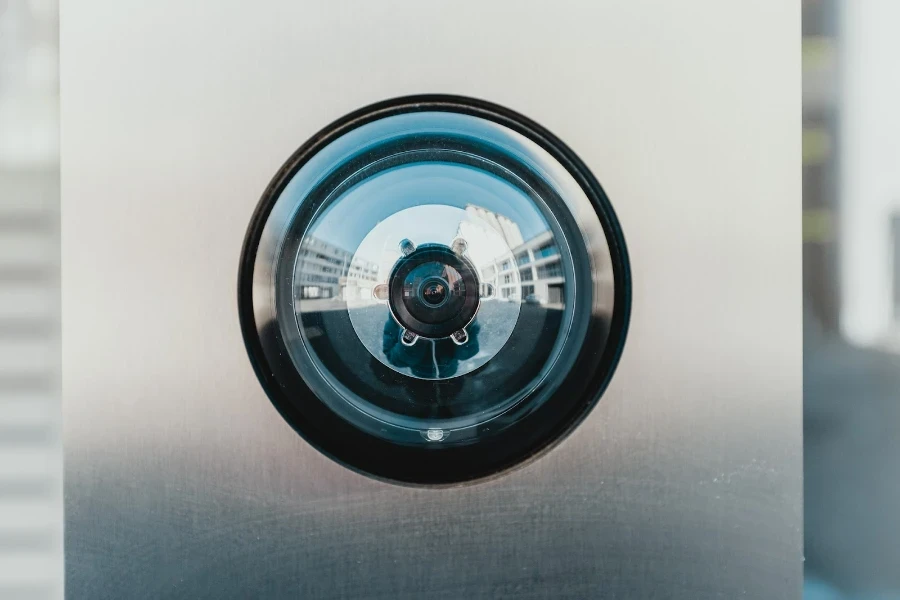
The evolution of video doorbells has been a fascinating journey, marked by significant technological advancements that have transformed them from basic surveillance cameras to sophisticated smart home devices. Here’s an overview of the critical stages in their development:
1 – Early CCTV systems
In the early days, video doorbells were primarily closed-circuit television (CCTV) cameras with a limited field of view. Due to their cost and complexity, these systems required complex wiring and were often reserved for commercial use. Video quality was typically low, making it challenging to identify individuals.
2 – Wired intercoms
The next evolution introduced wired intercom systems with a video component. These allowed homeowners to see and communicate with visitors at the front door from a monitor inside the house.
While an improvement, these systems were still relatively expensive and complex to install.
3 – Wireless video doorbells
The introduction of wireless video doorbells marked a significant shift in the market. These devices eliminated the need for complex wiring, making installation easier and more accessible for homeowners.
At this point, video doorbells began to include motion sensors and two-way audio communication. And Wi-Fi connectivity enabled remote access and viewing through smartphones and computers, enhancing convenience and security.
4 – High-Definition (HD) video
The demand for clearer video quality led to the integrating of high-definition cameras in video doorbells. HD resolution allowed for better identification of people and objects at the door, and wide-angle lenses expanded the field of view, capturing more of the surrounding area.
5 – Smart home integration
As smart homes gained popularity, video doorbells started integrating with popular smart home platforms. Users could now control their doorbells and view live feeds through voice commands or mobile apps.
Integration with virtual assistants like Amazon Alexa and Google Assistant also became common with smart home integration.
6 – Motion detection and alerts
Video doorbells became more intelligent with the introduction of advanced motion detection technology. They could differentiate between human motion and other movements, reducing false alarms.
Customizable motion detection zones also began to allow users to focus on specific areas of interest.
7 – Cloud storage and AI
Many video doorbells now offer cloud storage options for video footage, eliminating the need for physical storage devices.
Additionally, AI and machine learning are employed for facial recognition, package detection, and recognizing and alerting users about specific events or people.
The evolution of video doorbells showcases their journey from rudimentary security cameras to intelligent, connected devices that enhance security and provide homeowners convenience and peace of mind. We can expect even more exciting developments in video doorbells as technology advances.
Key factors when choosing a video doorbell
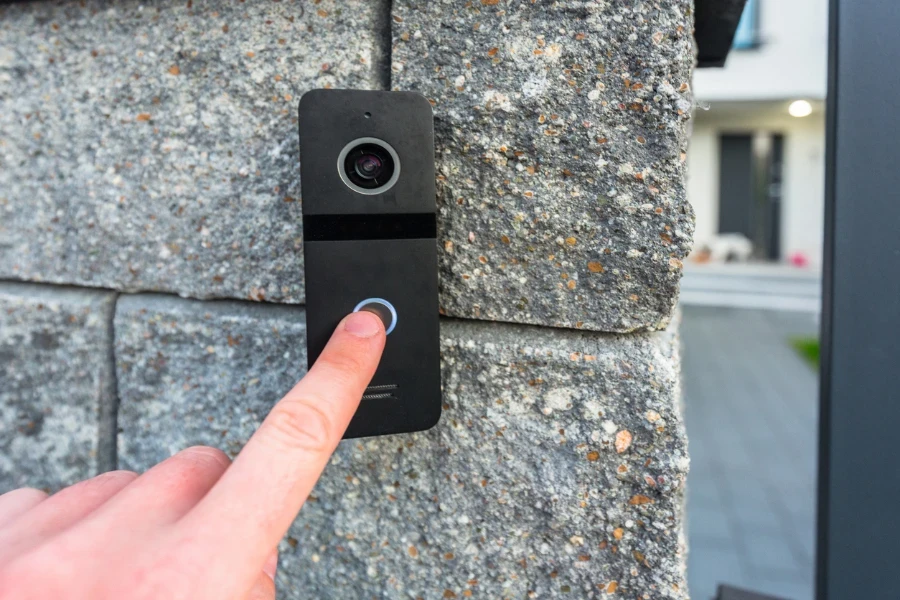
When choosing a video doorbell, consider these key factors to ensure that it meets your consumers’ needs and provides optimal functionality:
- Video quality and resolution: Look for a video doorbell with high-definition (1080p) or 2k or 4K resolution for clear, detailed footage. Better resolution ensures the recognition of faces and details effectively.
- Field of View (FOV): The FOV determines how much area the camera can capture. A wider FOV is preferable to cover more of the property.
- Two-way audio: Two-way audio allows communication with visitors, delivery personnel, or potential intruders through the doorbell. Ensure it offers clear and responsive audio.
- Motion detection: Motion detection capabilities are essential. Look for adjustable sensitivity settings and customizable motion zones to reduce false alerts.
- Night vision: Effective night vision is crucial for capturing clear footage in low-light or nighttime conditions. Infrared LEDs are commonly used for night vision.
- Power source: Video doorbells can be wired or battery-powered. Wired models draw power from existing doorbell wiring, while battery-powered ones are easier to install but require regular recharging or battery replacement.
- Mobile app features: A user-friendly mobile app is essential for managing a video doorbell. Features may include remote access, real-time alerts, and the ability to review and share footage.
- Cloud storage and local storage options: Determine whether the doorbell offers cloud storage for video footage and if there’s a subscription fee involved. Some models also support local storage via SD cards or network-attached storage (NAS) devices.
- Privacy and security features: Look for security features like end-to-end encryption and multi-factor authentication to protect your video streams from unauthorized access.
- Weather resistance: Ensure that the video doorbell is weather-resistant, especially if it will be exposed to the elements. Look for an IP rating that indicates its protection against dust and water.
By considering these key factors, you can select the best video doorbell that aligns with your consumers’ security needs.
The best video doorbells in 2023
Here is our handpicked selection of the best video doorbells in 2023:
Ring video doorbell
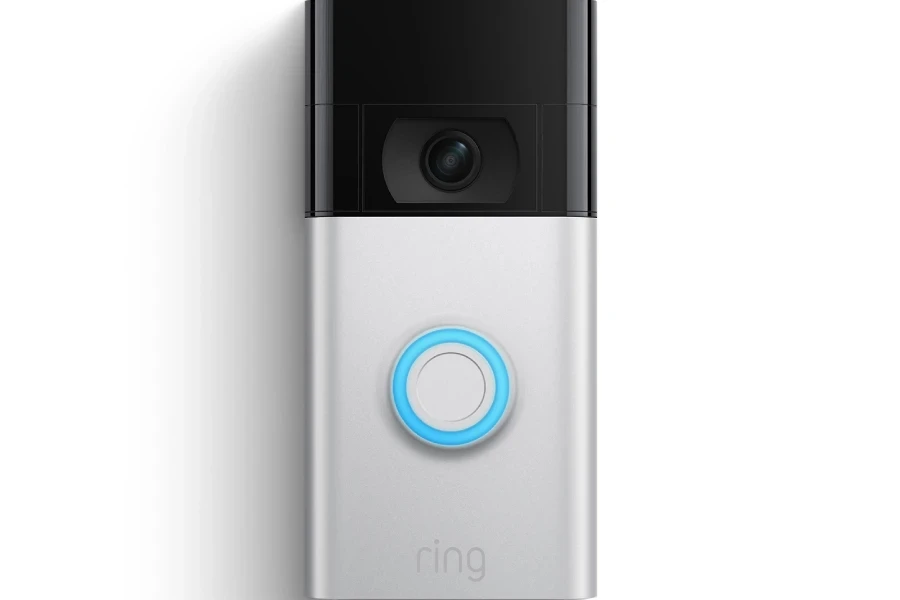
According to Google Ads, Ring video doorbells bring in over 20,000 monthly global searches. Ring has a wide variety of doorbells to suit consumer needs.
The Video Doorbell (second generation) is a great budget option. The most significant change from the first generation is the upgrade to 1080p resolution, two-way audio with noise cancellation, and adjustable motion zones.
This doorbell can either be hardwired or recharged via battery (also, consumers can purchase an additional solar charger to reduce the need to remove and recharge the doorbell).
For those looking for more high tech features, the Ring Video Doorbell Pro 2, is one of the best options because it offers a first of its kind 3D motion detection. It has the ability to detect where motion is detected on the property and give consumers a bird’s-eye view of the movement. In addition, it has 1536p HD live video camera with color night vision, 150-degree horizontal and vertical views, and built-in Alexa greetings.
Google nest doorbell
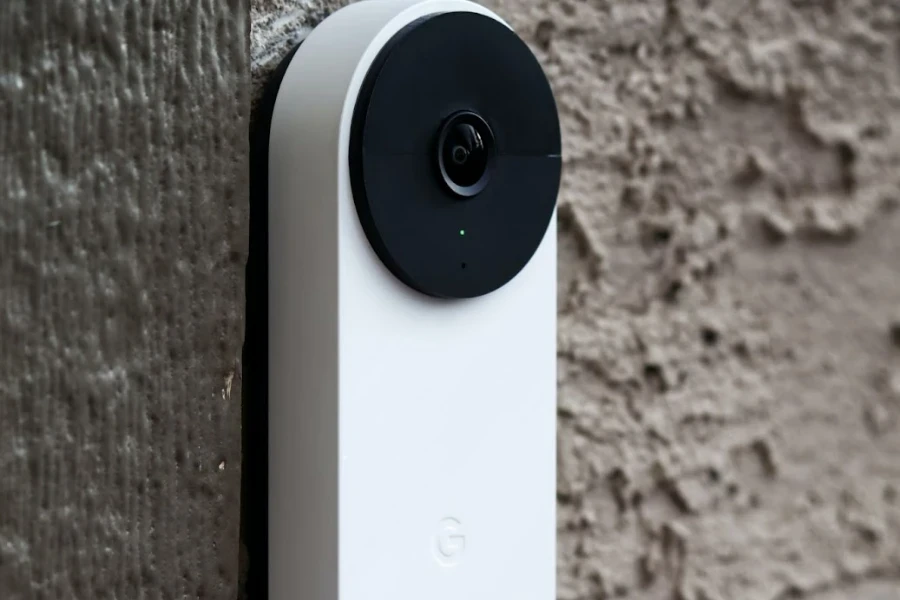
According to Google Ads, the Google Nest video doorbell is one of the highest searched video doorbells. We aren’t surprised that its sleek design appeals to consumers.
The Google Nest video doorbell stands out by offering free video history without the need for a subscription service, a rare perk. This wireless doorbell boasts a sleek matte plastic chassis that blends seamlessly with various decors.
It goes beyond aesthetics, featuring a 1.3-megapixel security camera with HDR video, night vision, and intelligent detection for pets, people, and vehicles. What’s more, if you can’t answer the door, it provides Quick Response options via the Google Home app, allowing the doorbell to relay responses to visitors.
While a subscription unlocks more advanced features, this model is strong on its own, thanks to its free video storage. In addition, there’s a wired version of this Nest doorbell with added features like continuous video recording and two-second previews, but the battery model remains a favored choice for its ease of installation and three-month battery life between charges.
Arlo video doorbell
One of the features that makes the Arlo video doorbell stand out is the video aspect ratio. Arlo has a wide 180 degree viewing angle and opts for a 1:1 aspect ratio which isn’t common among video doorbells. This allows enough viewing space to see packages left as well as the entire body of those approaching the doorbell.
One downside of this doorbell option according to consumers is that the button looks less like a button than with other options.
Blink video doorbell
The Blink Video Doorbell, aptly named, is a budget-friendly device that records in crisp 1080p resolution. It offers versatility with both wired and wireless connections and seamlessly integrates with Alexa. Monitoring your doorstep is made effortless through the user-friendly Blink smartphone app.
However, it’s worth noting that a significant portion of the Blink Video Doorbell’s functionality hinges on the Sync Module, which regrettably isn’t included with the initial purchase. Without it, your access is limited to live-view and two-way audio, triggered solely by motion alerts or doorbell presses. Nevertheless, if your smart home already boasts Alexa devices, this cost-effective video doorbell presents an excellent addition to your home security setup.
Conclusion
In 2023, technology isn’t just about gadgets, it’s about potential. By adding these cutting-edge video doorbells to your offerings, you’re not just selling, you’re providing security, connectivity, and a brighter future for your customers.

